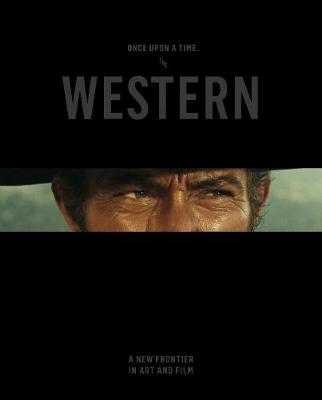The Western is the quintessential American epic - a mythic story of nation building and the triumphs and failures, the fantasies, and even the hypocrisies that process entails. Once Upon a Time . . . The Western: A New Frontier in Art and Film explores the genre and its attendant myths in the context of painting, photography, literature, and film from the mid-1800s to the present. This book is not a comprehensive history of Western film, but a story about the visualisation, transmission, and transformation of an American myth across disciplines of artistic practice over time. Wonderfully illustrated and published to accompany a major exhibition, the publication traces the development of the Western genre from its earliest beginnings in nineteenth-century landscape painting through John Ford's classic films and Sergio Leone's spaghetti Westerns and up to the most recent studio productions. The book includes more than fifteen essays by renowned specialists in fine art, film, and popular culture, and highlights significant works by artists such as Albert Bierstadt, Frederic Remington, Andy Warhol, Kent Monkman, and Christian Marclay, among others.
Although the earliest roots of the Western genre can be traced back to the colonial era, it was not until the mid-1800s that the West became a major source of popular entertainment. Once Upon a Time ... The Western takes as its starting point the moment when the development of large-scale landscape painting of the West, the mass production of dime novels and illustrated magazines, and later, the touring of Buffalo Bill's 'Wild West' show transformed the West into the Western: the engine of a homegrown American mythology.
Tracing the subsequent development of the genre from the earliest Western films through John Ford's classic Westerns, the drama of the postwar 'Super Western', and beyond, the exhibition will highlight the dialogue between film and fine art, fact and fiction throughout. In the 1960s, the Western was radically transformed through the work of the Italian director Sergio Leone, from whose Once Upon a Time in the West (1968) this exhibition takes its title. Drawing on the central tropes to emerge from the preceding decades of the genre's history, Leone created both a homage to and deconstruction of the Hollywood Western. From that point forward, the Western became a subject of inquiry, and sometimes irony for contemporary artists and filmmakers.
Although the Western no longer holds singular pride of place in the popular imagination, to this day the Western continues to shape our culture in important ways. In popular media, political figures are often referred to as 'cowboys' and the Internet has become the new frontier. Meanwhile, contemporary Western film directors like Quentin Tarantino (Django Unchained, 2012), Ang Lee (Brokeback Mountain, 2005), and Joel and Ethan Coen (True Grit, 2010 and No Country for Old Men, 2007) are finding new ways to challenge long entrenched notions of race, gender, and sexuality. At the same time, Native American artists are crafting powerful responses to the stereotyped roles in which they were often cast. The themes treated in this book are, moreover, directly related to current debates about gun violence, 'traditional' gender roles, and race relations in America.
- ISBN10 8874397658
- ISBN13 9788874397655
- Publish Date 20 June 2017
- Publish Status Active
- Out of Print 27 January 2021
- Publish Country IT
- Imprint Five Continents Editions
- Format Hardcover
- Pages 304
- Language English
